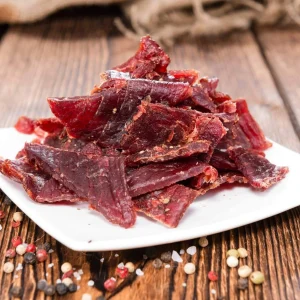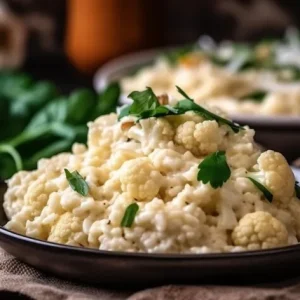Fine dining recipes represent the pinnacle of culinary artistry, elevating everyday ingredients to extraordinary heights. These sophisticated dishes showcase the skill and creativity of top chefs, transforming simple components into masterpieces that delight the senses. From delicate sauces to perfectly caramelized onions, every element is carefully crafted to create a harmonious and unforgettable dining experience.
In this exploration of gourmet cuisine, we’ll delve into the world of fine dining recipes across various culinary traditions. We’ll examine the intricacies of French cooking, the passion of Italian cuisine, the exotic flavors of Asian-inspired dishes, and the innovative spirit of fusion creations. Additionally, we’ll look at how vegetarian fine dining is pushing boundaries and redefining luxury cuisine. By the end, readers will gain insight into the techniques and philosophies that make these recipes truly exceptional.

Content
Mastering the Art of French Cuisine
French cuisine has long been regarded as the epitome of fine dining, setting the standard for culinary excellence worldwide. Its influence can be seen in kitchens across the globe, with many chefs taking pride in their classical French training. The art of French cooking lies in its attention to detail, precise techniques, and the use of high-quality ingredients to create dishes that are both elegant and flavorful.
One of the hallmarks of French cuisine is the emphasis on sauces and stocks, which form the foundation of many dishes. These elements require patience and skill to perfect, often involving hours of slow simmering to develop rich, complex flavors. The use of herbs and aromatics is also crucial, with ingredients like thyme, bay leaves, and garlic playing essential roles in enhancing the taste of various dishes.
Classic French Onion Soup
A prime example of French culinary mastery is the classic French onion soup. This beloved dish showcases the transformation of simple ingredients into something extraordinary. The key to its success lies in the careful caramelization of onions, a process that can take up to an hour to achieve the perfect depth of flavor. The onions are slowly cooked until they become a rich, golden brown, releasing their natural sweetness and creating a luxurious base for the soup.
The soup is typically made with beef stock, which adds a robust flavor and a deep color to the broth. White wine is often used to deglaze the pan, incorporating all the flavorful bits stuck to the bottom and adding a subtle acidity to balance the sweetness of the onions. The soup is then topped with a slice of crusty bread and a generous layer of melted cheese, usually Gruyère, creating a delightful contrast of textures.
Coq au Vin
Another iconic French dish that exemplifies the country’s culinary prowess is Coq au Vin. This chicken stew, traditionally made with rooster, is a testament to the French ability to transform humble ingredients into a dish fit for royalty. The chicken is marinated in red wine, often Burgundy, which not only tenderizes the meat but also imparts a rich, complex flavor.
The cooking process involves browning the chicken to develop a deep flavor before braising it slowly in the wine marinade along with bacon, mushrooms, and pearl onions. The result is a dish with tender, falling-off-the-bone meat and a sauce that is both rich and nuanced. The use of herbs like thyme and bay leaves adds depth to the flavor profile, while the addition of garlic enhances the overall taste.
Beef Bourguignon
Beef Bourguignon, another classic of French cuisine, further demonstrates the art of slow cooking and flavor development. This hearty stew, originating from the Burgundy region, features beef braised in red wine with a variety of vegetables and aromatics. The meat is first seared to create a flavorful crust before being slow-cooked in wine and beef stock until it becomes tender and succulent.
The addition of bacon lardons, mushrooms, and pearl onions contributes to the dish’s rich flavor and varied texture. The sauce, reduced and thickened during the cooking process, becomes a glossy, deeply flavored accompaniment to the meat. This dish exemplifies the French technique of building layers of flavor through careful preparation and slow cooking.
Mastering these fine dining recipes requires patience, attention to detail, and a deep understanding of flavor combinations. The art of French cuisine lies not just in following recipes, but in developing an intuitive sense of how ingredients interact and how flavors develop over time. By mastering these techniques, chefs can create dishes that are truly exceptional, elevating simple ingredients into culinary masterpieces.
Italian Culinary Delights
Italian cuisine has a reputation for its rich flavors, fresh ingredients, and time-honored traditions. It has become one of the most popular cuisines in America, with dishes like pizza and pasta ranking among the world’s favorite foods. The cuisine varies across Italy’s 20 geographical regions, each offering its own unique specialties and interpretations of classic dishes.
Handmade Pasta Techniques
One of the hallmarks of Italian cuisine is its handmade pasta. The art of pasta-making has been passed down through generations, with skilled artisans known as sfoglinas dedicating their lives to perfecting this craft. These pasta masters use traditional tools like wooden rolling pins and boards to create pasta sheets called sfoglia.
The process of making pasta by hand results in a product that is structurally different from machine-made pasta. When egg dough is rolled out by hand on a wooden board, it gradually thins, increases in size, and develops a slight coarseness from contact with the wood. This texture allows the pasta to absorb sauces better, resulting in a superior eating experience.
To make pasta dough, sfoglinas typically use a combination of high-quality “00” flour and fresh eggs. The ratio is generally one large egg for every 100 grams of flour. The dough is kneaded for about 10 to 15 minutes until it becomes elastic and smooth, with a texture similar to an earlobe.
Perfect Risotto
Another iconic Italian dish that showcases the country’s culinary prowess is risotto. This creamy rice dish originated in northern Italy and has become a staple of fine dining menus worldwide. The key to a perfect risotto lies in the technique and the quality of ingredients used.
Risotto alla Milanese, a classic version from the Lombardy region, has an interesting origin story. It’s said to have come about in the mid-1800s when glassmakers added saffron, which they were using to color stained glass windows, to their risotto. This resulted in the dish’s signature golden color and unique flavor profile.
To make a perfect risotto, chefs start by toasting the rice, typically Arborio or Carnaroli varieties, in a wide pan. This creates a shell around each grain, allowing it to slowly absorb moisture without becoming soggy. The rice is then cooked slowly, with small amounts of hot stock added gradually while stirring constantly. This process releases the starch from the rice, creating the dish’s characteristic creamy texture.
Osso Buco
Osso Buco, a hearty dish from Milan, is another fine dining recipe that exemplifies Italian cuisine. The name literally means “bone with a hole,” referring to the marrow-filled veal shank that is the star of the dish. This cut of meat has a rich flavor and becomes incredibly tender when braised slowly.
To prepare Osso Buco, the veal shanks are first dredged in flour and browned to develop a flavorful crust. They are then slowly braised in a mixture of wine, broth, and aromatic vegetables like onions, carrots, and celery. The long cooking process allows the meat to become fall-off-the-bone tender while the marrow adds richness to the sauce.
A traditional accompaniment to Osso Buco is gremolata, a bright and zesty condiment made from lemon zest, garlic, and parsley. This adds a fresh contrast to the rich, savory flavors of the braised meat. The dish is often served over creamy polenta or risotto, making it a truly indulgent fine dining experience.
These Italian culinary delights showcase the country’s dedication to quality ingredients, time-honored techniques, and the art of transforming simple components into extraordinary dishes. From handmade pasta to perfectly caramelized onions in risotto, Italian cuisine continues to captivate food lovers and inspire chefs around the world.
Asian-Inspired Gourmet Dishes
Asian cuisine has made a significant impact on fine dining recipes, bringing unique flavors and techniques to gourmet restaurants worldwide. Chefs have embraced the rich culinary traditions of countries like China, Japan, and Malaysia, creating innovative dishes that blend Eastern and Western influences. This fusion of flavors has resulted in some truly exceptional fine dining experiences.
Peking Duck Spring Rolls
One standout example of Asian-inspired gourmet cuisine is the Peking Duck Spring Roll. This dish takes the classic Chinese Peking duck and transforms it into an elegant appetizer. Chefs start by preparing the duck using traditional methods, which involve air-drying the bird to achieve crispy skin. The meat is then shredded and combined with hoisin sauce, scallions, and cucumber.
Instead of serving the duck with pancakes, as is customary, the ingredients are carefully wrapped in delicate rice paper. This creates a light, refreshing spring roll that captures the essence of Peking duck in a bite-sized format. The result is a perfect balance of textures and flavors, with the crispy duck skin contrasting beautifully against the tender meat and fresh vegetables.
Wagyu Beef Rendang
Another exceptional Asian-inspired dish that has found its way onto fine dining menus is Wagyu Beef Rendang. This fusion creation combines the luxurious, marbled beef of Japan with the rich, spicy flavors of Malaysian cuisine. Rendang is traditionally a slow-cooked, dry curry that originates from Indonesia but has become popular throughout Southeast Asia.
In this gourmet version, chefs use high-grade Wagyu beef, often opting for cuts like the neck or shin for their rich flavor and tenderness. The beef is slowly simmered in a complex mixture of coconut milk, lemongrass, ginger, and a blend of aromatic spices. As the liquid reduces, the beef becomes incredibly tender and absorbs the intense flavors of the spices.
What sets this dish apart is the way the marbling of the Wagyu beef melts during the slow cooking process, creating a lusciously rich and flavorful curry. The result is a dish that has a depth of flavor and a melt-in-your-mouth texture that elevates it far beyond traditional rendang.
Prawn Curry
Prawn curry is another Asian-inspired dish that has been reimagined for fine dining. Chefs take inspiration from South Indian cuisine, known for its bold flavors and use of fresh ingredients. The dish starts with selecting the highest quality prawns, which are then carefully cleaned and deveined.
The curry sauce is crafted using a blend of aromatic spices, including turmeric, coriander, and Kashmiri chili powder. Fresh curry leaves, a staple in South Indian cooking, add a unique, aromatic flavor that cannot be replicated with any other ingredient. The sauce is often enriched with coconut milk, which provides a creamy base that complements the spices and prawns perfectly.
What sets this fine dining version apart is the attention to detail in preparing the prawns. Chefs often pre-season the prawns with a light coating of spices before quickly searing them. This technique ensures that the prawns retain their delicate texture while absorbing the flavors of the curry. The result is a dish that balances the richness of the curry sauce with the sweet, tender flesh of perfectly cooked prawns.
These Asian-inspired gourmet dishes demonstrate how fine dining recipes can incorporate diverse culinary traditions to create truly exceptional experiences. By combining high-quality ingredients, traditional techniques, and innovative presentations, chefs have elevated these dishes to new heights, offering diners a taste of Asia through a refined, gourmet lens.
Innovative Fusion Creations
Fusion cuisine has become a hallmark of modern fine dining, blending culinary traditions to create exciting and unexpected flavor combinations. This innovative approach has given rise to dishes that challenge traditional boundaries and delight the palate. Chefs are pushing the envelope, combining ingredients and techniques from different cultures to craft unique culinary experiences.
Cheeseburger Spring Rolls
One standout example of fusion creativity is the cheeseburger spring roll. This dish takes the classic American cheeseburger and reimagines it in the form of a Chinese-inspired spring roll. The filling typically includes ground beef, onions, pickles, and cheese—all the components that make a cheeseburger delicious. These ingredients are carefully wrapped in thin spring roll wrappers and fried to a crispy golden brown.
The result is a satisfying appetizer that captures the essence of a cheeseburger in a bite-sized format. The contrast between the crispy exterior and the savory, cheesy interior creates a delightful textural experience. Some versions even incorporate ketchup and mustard into the filling or serve them as dipping sauces, further enhancing the cheeseburger flavor profile.
Moussaka Arancini
Another innovative fusion creation is Moussaka Arancini, which combines the Greek comfort food moussaka with the Italian rice balls known as arancini. Traditional moussaka features layers of eggplant, ground meat, and béchamel sauce, while arancini are typically filled with rice, cheese, and meat.
In this fusion dish, the flavors and ingredients of moussaka are incorporated into the arancini format. The rice is seasoned with cinnamon and oregano, reminiscent of Greek cuisine. The filling might include a mixture of ground lamb, eggplant, and tomato sauce, capturing the essence of moussaka. The exterior is coated in breadcrumbs and fried until golden, creating a crispy shell that gives way to the rich, flavorful interior.
Deconstructed Sushi
Deconstructed sushi is a prime example of how fine dining recipes can reimagine traditional dishes. This innovative approach takes the components of sushi and presents them in a new, artistic way. Instead of being rolled into compact pieces, the ingredients are arranged separately on the plate, allowing diners to appreciate each element individually.
A typical deconstructed sushi dish might feature a base of seasoned sushi rice, topped with slices of fresh raw fish, avocado, cucumber, and nori (seaweed) strips. The presentation often includes dollops of wasabi and soy sauce, allowing diners to customize each bite. This approach not only creates a visually striking dish but also allows for a more interactive dining experience.
These fusion creations demonstrate how chefs are using their culinary expertise to blend different cultural influences and create innovative fine dining recipes. By combining familiar flavors in unexpected ways, they’re able to offer diners unique and memorable experiences. The success of these dishes lies not just in their novelty, but in their ability to harmonize diverse culinary elements into cohesive, delicious wholes.
Elevating Vegetarian Fine Dining
Vegetarian fine dining has come a long way, with chefs pushing the boundaries of plant-based cuisine to create dishes that rival their meat-based counterparts. These innovative recipes showcase the versatility and depth of flavors that can be achieved with vegetarian ingredients, proving that fine dining recipes don’t need to rely on animal products to be exceptional.
Spinach and Ricotta Gnudi
One standout example of vegetarian fine dining is the spinach and ricotta gnudi. These delicate, pillowy dumplings are a testament to the art of Italian cuisine. Unlike traditional pasta, gnudi are made primarily from cheese and spinach, with just enough flour to hold them together. The result is a light, fluffy dumpling that melts in the mouth.
To create the perfect gnudi, chefs start with high-quality ricotta cheese, preferably the kind that’s freshly made and has a firm texture. This is combined with well-drained cooked spinach, eggs, Parmesan cheese, and a touch of nutmeg for depth of flavor. The mixture is then carefully shaped into small balls and dusted with flour before being gently boiled.
The key to successful gnudi lies in the quality of the ricotta and the careful handling of the dough. Overworking the mixture or using too much flour can result in dense, heavy dumplings. When done right, gnudi have a delicate texture that’s unlike any other pasta dish, making them a true delicacy in vegetarian fine dining.
Pumpkin Velouté
Another exquisite vegetarian dish that has found its place in fine dining establishments is the pumpkin velouté. This velvety soup showcases the natural sweetness and complexity of pumpkin, elevated with carefully chosen aromatics and spices.
To create this luxurious soup, chefs start by sweating onions in butter until they’re soft and translucent. Diced pumpkin is then added and cooked until it begins to soften and turn golden. The addition of ginger, vanilla, and orange juice brings depth and brightness to the dish, complementing the natural sweetness of the pumpkin.
The soup is then simmered with chicken stock (or vegetable stock for a fully vegetarian version) until the pumpkin is completely soft. A touch of double cream is added for richness, and the soup is blended until smooth and velvety. The final touch is a careful seasoning with salt, pepper, and sometimes a hint of lemon juice to balance the flavors.
Truffle Risotto
Truffle risotto is a prime example of how vegetarian dishes can be elevated to gourmet status. This luxurious dish combines the creamy texture of perfectly cooked risotto with the earthy, intense flavor of truffles.
The process begins with sautéing finely chopped onions in butter or olive oil. Arborio rice is then added and toasted briefly before being deglazed with white wine. The key to a perfect risotto lies in the slow addition of hot stock, stirring constantly to release the starch from the rice and create a creamy texture.
What sets truffle risotto apart is the addition of truffle oil or freshly shaved truffles. The strong, earthy aroma of truffles adds a layer of complexity that transforms the dish into something truly special. Some chefs also incorporate mushrooms into the risotto, enhancing the earthy flavors and adding texture.
These fine dining recipes demonstrate that vegetarian cuisine can be just as sophisticated and flavorful as any meat-based dish. By focusing on high-quality ingredients, precise techniques, and innovative flavor combinations, chefs are creating vegetarian dishes that are worthy of any gourmet restaurant menu.
Conclusion
The world of fine dining recipes is a testament to the artistry and skill of top chefs. From the rich traditions of French and Italian cuisine to the exotic flavors of Asian-inspired dishes and innovative fusion creations, these culinary masterpieces showcase the power of quality ingredients and expert techniques. What’s more, the rise of vegetarian fine dining has shown that plant-based dishes can be just as luxurious and satisfying as their meat-based counterparts.
In the end, these gourmet recipes do more than just feed us – they offer a sensory experience that delights and inspires. They show us the endless possibilities when passion meets creativity in the kitchen. As the culinary world keeps evolving, we can look forward to even more exciting and groundbreaking dishes that push the boundaries of what’s possible in fine dining.

Jesus is a health blog author who has been writing about nutrition, fitness and healthy living for over 10 years. He also loves to run, hike and bike with her wife.






